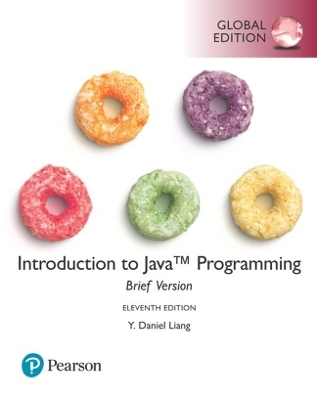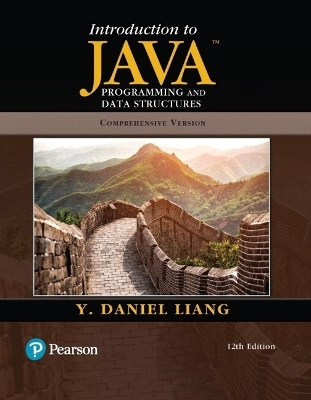
Enterprise Java™ Servlets
Addison Wesley
978-0-201-70921-6 (ISBN)
- Titel ist leider vergriffen;
keine Neuauflage - Artikel merken
This is not a beginner's guide: it's an enterprise developer's guide to building industrial-strength servlets. Jeff Genender shows exactly how to dramatically improve servlet performance, reliability, and scalability, while simplifying coding and maintenance in large-scale development environments. This book brings together in-depth tutorials, case studies, and reference materials for advanced real-world servlet development. It draws heavily on the author's own experience in developing servlet architectures from scratch and transforming inferior servlet applications into stable, reliable software. Among the topics covered: creating a reusable base servlet architecture that accelerates development and streamlines maintenance; improving error handling; establishing processes that allow multiple developers to work on the same server projects; and using servlets in sophisticated load balancing and fault tolerance applications. For all enterprise developers working with servlets and related technologies, and for Web developers who need to replace their current server-side technologies with a more powerful solution.
Jeff Genender has been specializing in Java servlet technology for more than six years. Currently affiliated with Savoir Technologies, he is a veteran consultant specializing in Java and Web development. 020170921XAB08202001
Foreword.
Preface.
1. Introduction to Enterprise Servlets.
Developing Servlets and Servlet Containers.
Setting Up and Running Servlets.
Registering Servlets with the Servlet Container.
What You Need.
The Base Enterprise Servlet.
The Single-Servlet Approach.
Base Enterprise Servlet Basics.
Implementation of a Base Servlet.
The Class.forName() Method.
The HttpMethod Class.
The ConfFile Class.
The MethodList Class.
Sample Application.
Summary.
Chapter 2. AppContext: Managing Applications.
The ConfigFile Revisited.
The AppContext Object.
Restructuring the BaseEnterpriseServlet.
The Two Application Example.
Forcing Uniqueness Across Applications—AppManager.
Summary.
Chapter 3. Forms, State and Session Management.
HTTP Forms: A Review.
The ‹FORM› Tag.
Packaging the Query with GET and POST.
HTTP Forms and Enterprise Servlets.
Form and HTML Development in the Enterprise.
Maintaining State with Sessions in the Enterprise.
Standard Servlet Architecture and Sessions.
The Enterprise Session.
Session and Form Example with Multiple Applications.
Summary.
Chapter 4. HTML with Templates.
Using Templates.
JSP as a Template Engine.
Developing a Template Engine.
The HTML Template.
Templates with Enterprise Servlets.
Nesting Templates.
Making It Scream—Caching Templates.
Building the Template Cache.
Integrating the Template Objects and Cache into Enterprise Servlets.
into Enterprise Servlets.
Using the Template Cache in Enterprise Servlets.
Summary.
Chapter 5. Logging and Error Handling.
Logging in a Servlet Engine.
Anomalies of a Servlet Engine Log File.
The Components of a Standardized Log File.
The EnterpriseLog Object.
Logging in Enterprise Servlets.
A Logging Example.
Error Handling.
The DefaultErrorHandler Object.
Logger Application with Error-Handling.
Summary.
Chapter 6. Security.
Types of Security.
Web Authentication.
Under the Hood.
Customizing Web Authentication.
Example Using Pluggable Security Components.
Form-Based Authentication.
Integrating Form-Based Authentication into Enterprise Servlets.
Summary.
Chapter 7. Pools.
What Is a Pool?
Using Pools in Web Development.
Base Pool Object.
Using the Pool Object.
Using the Pool: An Example.
The Pool Anomaly.
The PoolList and PoolObjectManager.
Using the PoolList and PoolObjectManager: An Example.
Summary.
Chapter 8. Database Connectivity.
JDBC: A Quick Review.
Loading the Driver and Connecting to the Database.
JDBC Statement and ResultSet Objects.
The PreparedStatement and CallableStatement Objects.
Transactions.
Closing the Connection.
Managing the Connection in a Server Environment.
Understanding Connection Management.
Building Connection Management.
The JDBCManager Object.
The SQLCursor Object.
The DBConnection Object.
Using the Connection Management Objects.
Database Pooling with the Connection.
Management Objects.
Using the DBConnectionPool Object.
Making the DBConnectionPool Object Easier to Create.
The NameValuePair Object.
The DBPoolParser Object.
Using the DBPoolParser in Enterprise Servlets.
Summary.
Chapter 9. LDAP Connectivity.
A Little History on LDAP.
How LDAP Works.
Distinguished Names.
Advantages and Disadvantages of LDAP.
LDAP with Java: The JNDI.
Connecting to LDAP.
Searching LDAP for Values.
Sorting Results.
Adding and Removing an Entry.
Modifying Attributes Within an Entry.
Closing the LDAPContext Object.
LDAP Considerations in a Server Application.
Building the LDAP Connection Management Objects.
The LDAPManager Object.
The LDAPConnection Object.
Using the LDAP Connection Management Objects.
The LDAPConnectionPool Object.
Putting the Connection Management Objects to Use.
Summary.
Chapter 10. Dynamic Graphics.
How a Browser Requests Images.
Handling Image Types.
Dynamic Images.
Memory Management.
Creating Objects Is Your Worst Enemy.
Pooling Memory Buffers.
Random Pie Chart Example.
Summary.
Chapter 11. Using JSP with Enterprise Servlets.
Is There a Preference?
JSPs with Servlets.
JSP and Enterprise Servlets.
Releasing BaseEnterpriseServlet's Grip on AppContext.
Tapping into the Enterprise Servlet.
A Quick Look at the Java Tag Library.
Bridging the JSP to the Enterprise Servlet.
Using the ESBridge Tag Library.
Accessing the EnterpriseSession Object.
Using the Tag.
Handling Errors.
Summary.
Chapter 12. Taking Enterprise Servlets Further.
Web Server Startup in a Multiapplication Environment.
Enhancements for the Reader.
The Template Engine.
The Database and LDAP Pools.
Administrative Tool.
Pager or Email Monitor.
Anything You Want.
Bibliography.
Index.
| Erscheint lt. Verlag | 13.9.2001 |
|---|---|
| Verlagsort | Boston |
| Sprache | englisch |
| Maße | 187 x 233 mm |
| Gewicht | 711 g |
| Themenwelt | Informatik ► Programmiersprachen / -werkzeuge ► Java |
| Mathematik / Informatik ► Informatik ► Web / Internet | |
| ISBN-10 | 0-201-70921-X / 020170921X |
| ISBN-13 | 978-0-201-70921-6 / 9780201709216 |
| Zustand | Neuware |
| Informationen gemäß Produktsicherheitsverordnung (GPSR) | |
| Haben Sie eine Frage zum Produkt? |
aus dem Bereich

